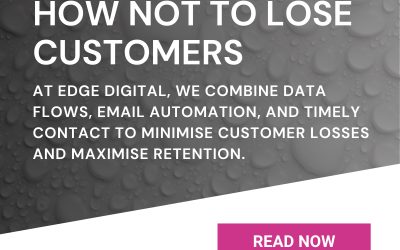Mastering Subject Lines: Email Marketing Best Practices
Email marketing has become an integral part of any successful marketing strategy. With the rise of digital communication, email has become a primary means of reaching and engaging with customers. However, with the average person receiving over 120 emails per day, it can be challenging to stand out in a crowded inbox. This is where the art of crafting compelling subject lines comes into play. A well-crafted subject line has the power to captivate recipients, increase engagement, and reinforce brand recognition. In this comprehensive guide, we will explore in-depth the best practices for creating subject lines that not only grab attention but also provide value and drive action.
reaching and engaging with customers. However, with the average person receiving over 120 emails per day, it can be challenging to stand out in a crowded inbox. This is where the art of crafting compelling subject lines comes into play. A well-crafted subject line has the power to captivate recipients, increase engagement, and reinforce brand recognition. In this comprehensive guide, we will explore in-depth the best practices for creating subject lines that not only grab attention but also provide value and drive action.
Establishing Clarity and Specificity
One of the fundamental principles of an effective subject line is clarity. It is imperative that the purpose or essence of the email is unequivocally conveyed in the subject line. Ambiguity or vagueness can lead to confusion among recipients, potentially causing them to overlook or disregard the email. By providing a clear indication of what the email entails, recipients are more likely to open it with a clear understanding of what to expect.
The Personal Touch: Personalisation Strategies
Subject lines have a greater impact when they are personalised. This entails more than merely addressing the recipient by name. It involves tailoring the subject line to align with the recipient’s preferences, behaviour, or past interactions with your brand. Personalisation not only enhances open rates but also cultivates a sense of individualised attention, thereby fostering a stronger connection between the recipient and your brand.
Descriptive Subject Lines: Guiding Expectations
A descriptive subject line serves as a preview of the email’s contents. It provides recipients with a concise yet informative snapshot of what they can anticipate upon opening the email. This aids in their decision-making process, enabling them to prioritise and engage with emails that align with their immediate interests or needs.
Filtering by Objectives
Subject lines can also be used to achieve the desired outcome by making them work as a filter. For example a highly descriptive SL might achieve low open rates (as only those who are interested will open it) but conversely the click rates will be higher. On the flip side, vague and intriguing SL’s will get higher open rates but then lower clicks. If the goal is awareness rather than traffic then it’s fair to opt for a vague and intriguing SL to maximise the reach.
The Art of Conciseness
In an era inundated with information, brevity is a virtue. A concise subject line is more likely to capture attention amidst the deluge of emails flooding an inbox. The 50-character threshold serves as a pragmatic guideline, ensuring that the subject line remains succinct and impactful. Should brevity pose a challenge, careful consideration of word choice and the elimination of superfluous details can refine the subject line to its essence.
Striking the Right Punctuation Balance
Punctuation wields influence in subject lines. While it can be a valuable tool for emphasis, excessive or haphazard use can inadvertently convey a sense of spamminess. Striking the right balance is crucial, as judicious punctuation can lend rhythm and clarity to the subject line without overwhelming the reader.
Emojis: Enhancing Visual Engagement
Emojis have emerged as a dynamic element in subject lines, offering a visual dimension to the text. When used judiciously and contextually, emojis can infuse personality and emotion, resonating with certain segments of your audience. However, their selection should be aligned with the content and audience demographic to ensure relevance and resonance.
Instilling Urgency: The Call to Action
Creating a sense of urgency within the subject line can be a potent catalyst for immediate action. By articulating a time-sensitive opportunity or benefit, you compel recipients to prioritise the email and act promptly. However, urgency should be genuine and aligned with the content of the email to maintain trust and credibility.
Provoking Curiosity: Open-Ended Questions
Questions possess a magnetic quality, drawing the reader’s focus towards them. Open-ended questions, in particular, stimulate curiosity and invite contemplation. When strategically placed in the subject line, they entice recipients to delve into the email in search of answers or insights.
Testing and Refinement
Email marketing is dynamic, with recipient preferences and behaviours in a constant state of flux. A/B testing is an invaluable tool for discerning the most effective subject lines for your audience. By conducting controlled experiments with variations of subject lines, you gain empirical insights into what resonates most with your recipients. This data-driven approach empowers you to refine and optimise your subject lines for maximum impact.
Vigilant Proofreading and Testing
Before releasing your email into the digital sphere, meticulous scrutiny is paramount. This entails a comprehensive review of any spelling or grammatical errors that could undermine the professionalism and credibility of your message. Additionally, rigorous testing of all links and multimedia ensures a seamless user experience, preventing any potential technical hiccups that could detract from the efficacy of the email.
Examples of Subject Lines
Looking at some examples of effective subject lines can also be helpful. Value-focused subject lines like “Essential Oils… Learn what they do!” are a great way to pique your audience’s interest. While open-ended question subject lines like “Will you put down your phone to save a child’s life?” can be a powerful way to engage readers on a deeper level. Urgency-focused subject lines like “👻 Trip or Treat!” can create a sense of excitement and immediacy. While descriptive subject lines like “Your order is being processed” are straightforward and clear about the email’s purpose.
Conclusion: Invest Time in Your Email Marketing Strategy
In the dynamic landscape of email marketing, subject lines wield unparalleled influence. By adhering to these best practices, you empower your emails to transcend the confines of the inbox and resonate with recipients on a profound level. Remember, subject lines are not static; they evolve alongside your audience. Regular testing, refinement, and a commitment to delivering value will ensure that your email marketing endeavours continue to yield optimal results.
FAQs:
How important are subject lines in email marketing?
Subject lines are crucial in email marketing as they are the first point of contact with recipients and can significantly impact open rates and engagement.
How can personalisation be incorporated into subject lines?
Personalisation can be achieved by tailoring subject lines to align with the recipient’s preferences, behaviour, or past interactions with your brand.
What is the ideal length for a subject line?
The ideal length for a subject line is 50 characters or less, as it ensures brevity and impact.
How can emojis be used effectively in subject lines?
Emojis can be used effectively by selecting them based on relevance to the content and audience demographic, and using them judiciously and contextually.
Why is A/B testing important for subject lines?
A/B testing allows for data-driven insights into what resonates with your audience, enabling you to refine and optimise subject lines for maximum impact.
Sources:
[1] https://www.linkedin.com/pulse/best-practices-crafting-effective-email-subject-lines-content
[2] https://mailchimp.com/help/best-practices-for-email-subject-lines/
[3] https://www.constantcontact.com/blog/good-email-subject-lines/
[4] https://copyposse.com/blog/email-marketing-tutorial-how-to-write-better-email-subject-lines/
[5] https://blog.hubspot.com/marketing/improve-your-email-subject-line
[6] https://drexel.edu/graduatecollege/professional-development/blog/2018/October/12-tips-for-writing-effective-emails/

 reaching and engaging with customers. However, with the average person receiving over 120 emails per day, it can be challenging to stand out in a crowded inbox. This is where the art of crafting compelling subject lines comes into play. A well-crafted subject line has the power to captivate recipients, increase engagement, and reinforce brand recognition. In this comprehensive guide, we will explore in-depth the best practices for creating subject lines that not only grab attention but also provide value and drive action.
reaching and engaging with customers. However, with the average person receiving over 120 emails per day, it can be challenging to stand out in a crowded inbox. This is where the art of crafting compelling subject lines comes into play. A well-crafted subject line has the power to captivate recipients, increase engagement, and reinforce brand recognition. In this comprehensive guide, we will explore in-depth the best practices for creating subject lines that not only grab attention but also provide value and drive action.

